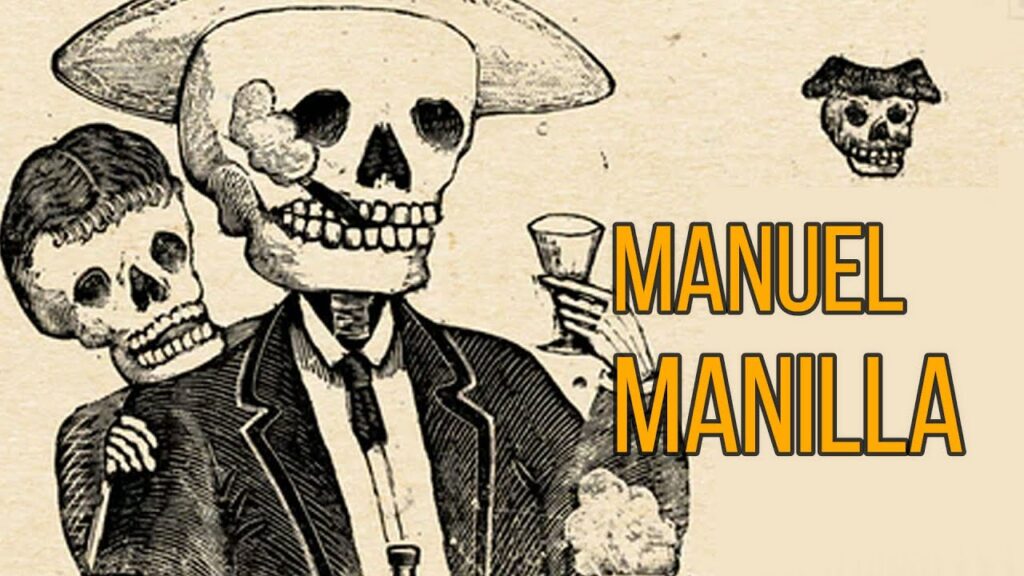The Significance of the Staff of Command in Indigenous Mexican Cultures
The staff of command, also known as a “bastón de mando” in Spanish, holds a prominent place in the social and ceremonial life of various indigenous groups in Mexico. For these cultures, the staff is not merely a symbol of authority but represents a tangible connection to the spiritual and ancestral realms. Crafted from wood and often adorned with intricate carvings and potent symbols, the staff is entrusted to leaders who are seen as not only political figureheads but also as spiritual mediators.
In some indigenous Mexican communities, the staff of command is an emblem of office that is passed down through generations. This suggests a deep respect for the continuity of tradition and lineage. The person holding the staff is endowed with the responsibility of guiding their community, making decisions that are aligned with the welfare of their people and the preservation of their culture. The staff itself, therefore, becomes a repository of the community’s history and collective memory.
Different indigenous groups attribute varying significances and powers to the staff. Among the Maya, for example, it is sometimes believed that the staff holds the spirits of ancestors, conferring upon the holder the wisdom and experiences of past leaders. For the Wixárika (Huichol) people, the staff may also be a tool for communication with the divine, used in ceremonies to ensure the fertility of the earth and the well-being of their community.
The production of a staff of command is itself a significant process, often involving ritualistic elements. The selection of wood might coincide with astrological conditions or involve specific prayers and offerings. The decoration of the staff frequently reflects cosmological concepts, with colors and symbols specific to the mythology and religious beliefs of the tribe. As a result, each staff is unique, embodying the particular spiritual insights and aesthetic preferences of the culture it comes from.
Today, while modernity has affected many aspects of indigenous life in Mexico, the staff of command remains a potent emblem of indigenous identity and resistance. It serves not just as a reminder of the past but as an active instrument in cultural preservation and the assertion of sovereignty. During political protests and negotiations, indigenous leaders often carry their staves as a declaration of their authority and as a visual representation of their community’s resilience.
Understanding the Cultural Importance of the Bastón de Mando
The Bastón de Mando, or Staff of Command, is a symbol of authority and leadership deeply rooted in the indigenous cultures of Mexico. Often made from wood and adorned with intricate carvings, precious metals, and symbols, the Bastón de Mando represents more than a mere ceremonial object; it is a pivotal element in the social and ceremonial life of many communities. Its presence during festivals, rituals, and community gatherings marks the respect and recognition given to the holder by the people.
In Mexico’s indigenous societies, the transfer of a Bastón de Mando is a significant event. It signifies the passing of responsibility from one leader to another. This is not merely a formal change of leadership but also a sacred act that is believed to impart the wisdom and experiences of past leaders to the new one. This continuity ensures that the community remains rooted in its ancestral traditions while adapting to the present-day challenges.
Each Bastón de Mando is unique to the community it represents, often featuring designs and materials that hold specific cultural significance. For example, a staff might include symbols representing ancient gods, local fauna, or historical events. These artistic elements are not only aesthetic but serve to encode the history and values of the people, thus becoming an instrument of education and cultural identity for the younger generations.
Today, the Bastón de Mando has gained recognition beyond its traditional contexts. It is a symbol of resilience and cultural pride amongst the indigenous populations in a modern Mexico. When leaders carry the staff, they carry the weight of communal expectations and the honor of their cultural heritage, inspiring others to respect and support the enduring traditions that the Bastón de Mando embodies.
The Symbolism Behind the Bastón de Mando in Mexican Indigenous Communities
The bastón de mando, or staff of command, is a traditional symbol of authority and governance in many Mexican indigenous communities. It is more than just a physical object; it embodies the spiritual and cultural values that have been passed down through generations. The staff, often ornately carved and decorated, is not merely a tool of leadership but represents the unity and continuity of a community’s identity. Its significance is deeply interwoven with indigenous concepts of power, responsibility, and the sacred nature of communal leadership.
Within Mexican indigenous societies, the bastón de mando is often presented during ceremonies where a new leader is inaugurated, symbolizing the transfer of power and the acceptance of duties by the new holder. The very act of passing the staff is rich in ritual and meaning, reinforcing the bond between the community, its land, and its traditions. This ceremonial act ensures that the leader is reminded of their commitment to serve and protect the community’s welfare according to ancestral laws and customs.
The designs and motifs adorning the bastón de mando often tell a story or represent the specific beliefs of the community it belongs to. From animals that are considered sacred, such as the eagle or jaguar, to intricate patterns symbolizing the relationship between the earth and the cosmos, each element is carefully chosen to reflect the community’s ethos. In many cases, the staffs are imbued with protective spirits, conceived to guide and watch over the leaders as they perform their duties.
Ultimately, the bastón de mando is a powerful emblem of resilience and indigenous identity. In a country that has experienced centuries of colonization and cultural upheavals, the continued use and reverence of the staff are testaments to the survival and strength of Mexican indigenous communities. As new generations rise to leadership, the staff serves as a link to their cultural heritage and an inspiration to uphold the sovereign spirit of their people.
The Role of the Bastón de Mando in Indigenous Ceremonies and Governance
The Bastón de Mando, also known as the “staff of command,” is a symbol of authority and leadership among various indigenous communities throughout Mexico. Its use in ceremonies and governance epitomizes the rich cultural traditions that have been passed down through generations. Historically, this ceremonial staff represents not only leadership but also the responsibility and wisdom of the person who holds it.
In indigenous communities, the Bastón de Mando is often conferred during significant events that require a change or reaffirmation of leadership. Ceremonies involving the staff are marked with great respect and solemnity, acknowledging the sacred trust between the leader and the people. The transfer of the bastón is usually accompanied by a series of traditional practices, including rituals, dances, and prayers, encapsulating the community’s spirituality and connection to their ancestors.
The design of a Bastón de Mando is deeply symbolic and varies from one community to another. Commonly, it is adorned with elements that reflect the cultural identity of the people, such as carvings of animals, totemic symbols, or elements from nature. These designs are not merely decorative but are imbued with meanings and stories that encapsulate the values and history of the community.
Within the sphere of governance, the Bastón de Mando holds a dual role as a symbol of power and a reminder of servitude. Leaders entrusted with the staff are expected to govern with integrity, wisdom, and respect for the collective good. It is a physical manifestation of their commitment to serve the community and uphold the traditions that have been entrusted to them by their forebearers.
In modern times, the Bastón de Mando continues to hold immense cultural significance among indigenous populations. It is not only a ceremonial relic but also a living emblem of identity and continuity. As newer generations take on the mantle of leadership, the bastón serves as a connecting thread between the past, present, and future, ensuring that the lessons and legacies of ancestors continue to guide and influence community governance and cultural practice.
Exploring the Rich History of the Bastón de Mando in Mexico
The Bastón de Mando, or Staff of Command, is an emblematic symbol of authority and leadership within many indigenous communities in Mexico. Its origins can be traced back to the pre-Columbian era, where these staves were often elaborately decorated to signify the status and power of the bearer. Typically carved from wood and embellished with intricate designs, metals, and sometimes precious stones, the Bastón de Mando was more than just a physical object; it was a representation of wisdom and the link between the material world and the spiritual realm.
In contemporary times, the Bastón de Mando continues to hold profound significance among indigenous cultures. During traditional ceremonies, community leaders are regularly seen wielding their staves, which now also symbolize the continuity of ancient customs in the modern world. These staves are carefully passed from one leader to the next, often during special ceremonies that signify the transfer of responsibility and the communal recognition of the new leader’s role. For many, it is not only a cherished cultural artifact but also a living conduit between past, present, and future generations of their people.
The design and ornamentation of the Bastón de Mando can reveal much about the specific community it represents. Each region in Mexico has its unique style and crafting techniques, making each staff a personalized and deeply symbolic piece. Some may feature symbols of the sun and moon, depictions of animals, or intricate geometric patterns, each with its own set of meanings and stories. Exploring the diverse designs of the Bastón de Mando allows for a greater understanding of the rich tapestry of Mexico’s indigenous history and provides insight into the beliefs and values that have been upheld for centuries.



